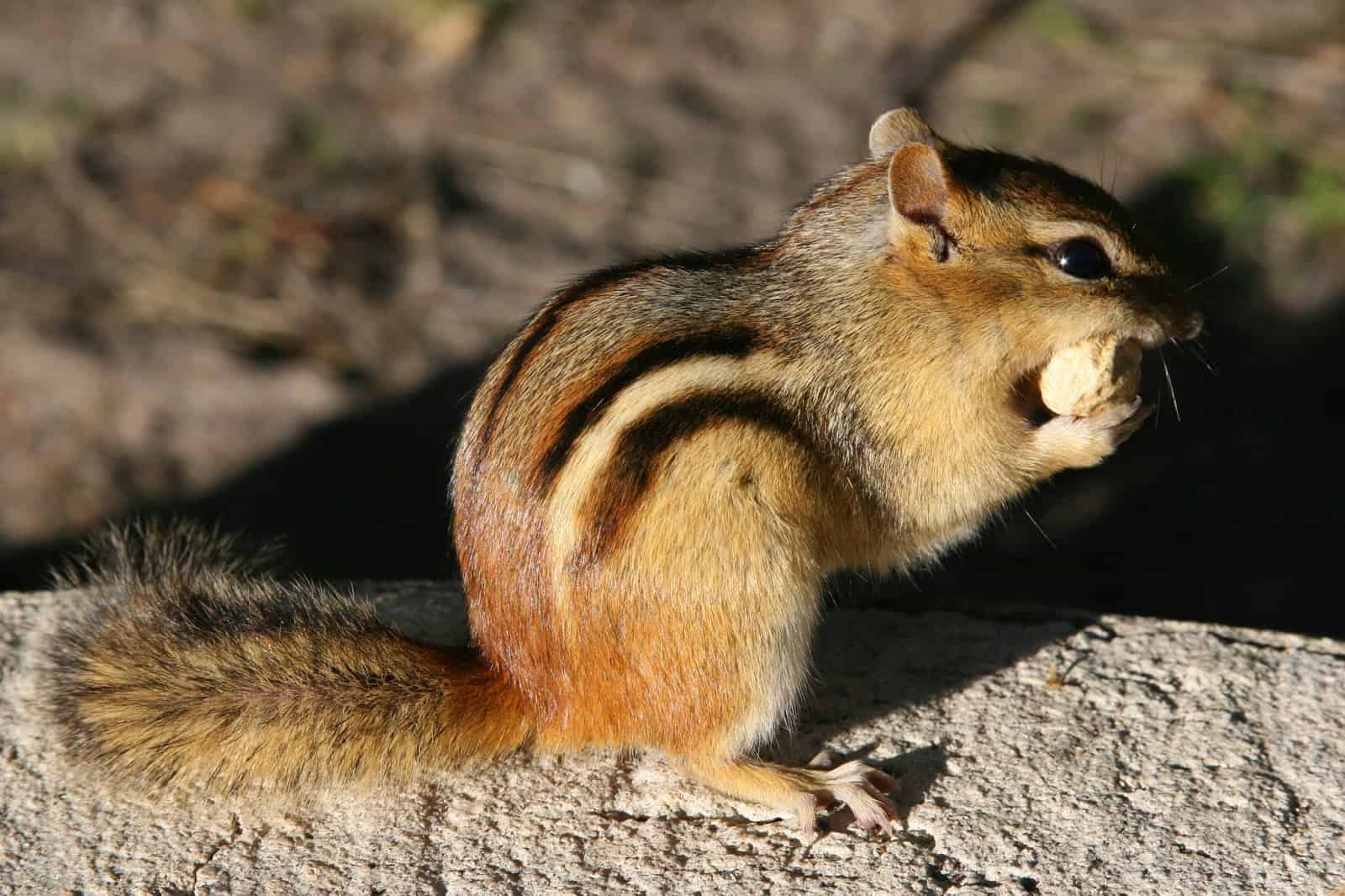 Now that spring has arrived you may be seeing one of the heralds of spring – the Chipmunk! They are emerging from their winter dens where they basically slept away the cold winter in their soft and cozy unground nests…complete with latrine and larder!
Now that spring has arrived you may be seeing one of the heralds of spring – the Chipmunk! They are emerging from their winter dens where they basically slept away the cold winter in their soft and cozy unground nests…complete with latrine and larder!
Did you know that there are five types of chipmunks in Canada? The type we most often see around the Camp are the Eastern Chipmunks!
Here are a few fun facts about the Eastern Chipmunk:
- They are small with five dark stripes along their sides and back, and one long stripe down the middle of their back. There are whiteish bands of fur between the dark stripes, and the stripes continue onto their face and around their eyes. They have a white belly and a hairy but flat tall.
- The Eastern Chipmunks are diurnal, meaning you will see them shortly after sunrise and they return to their burrows around sundown.
- Each chipmunk has its own burrow.
- They are very vocal especially when alarmed by the presence of a predator like owls, hawks, weasels, snakes, or even domestic cats. They will let out a sharp ‘chirp’ which can be repeated over and over, or the chirp can end in a chattering sound.
- They like to eat fruits, nuts, seeds, but also mushrooms and eggs.
- Chipmunks have expandable cheek pouches that can almost be as wide as their body is long, when fully stuffed. They use these to carry food back to their borrows.
- Chipmunks have a life span of one to five years.
It’s always a pleasure to welcome the chipmunks back each spring.
Be sure to put out some seeds and nuts to help them over the early spring when food is scarce.
